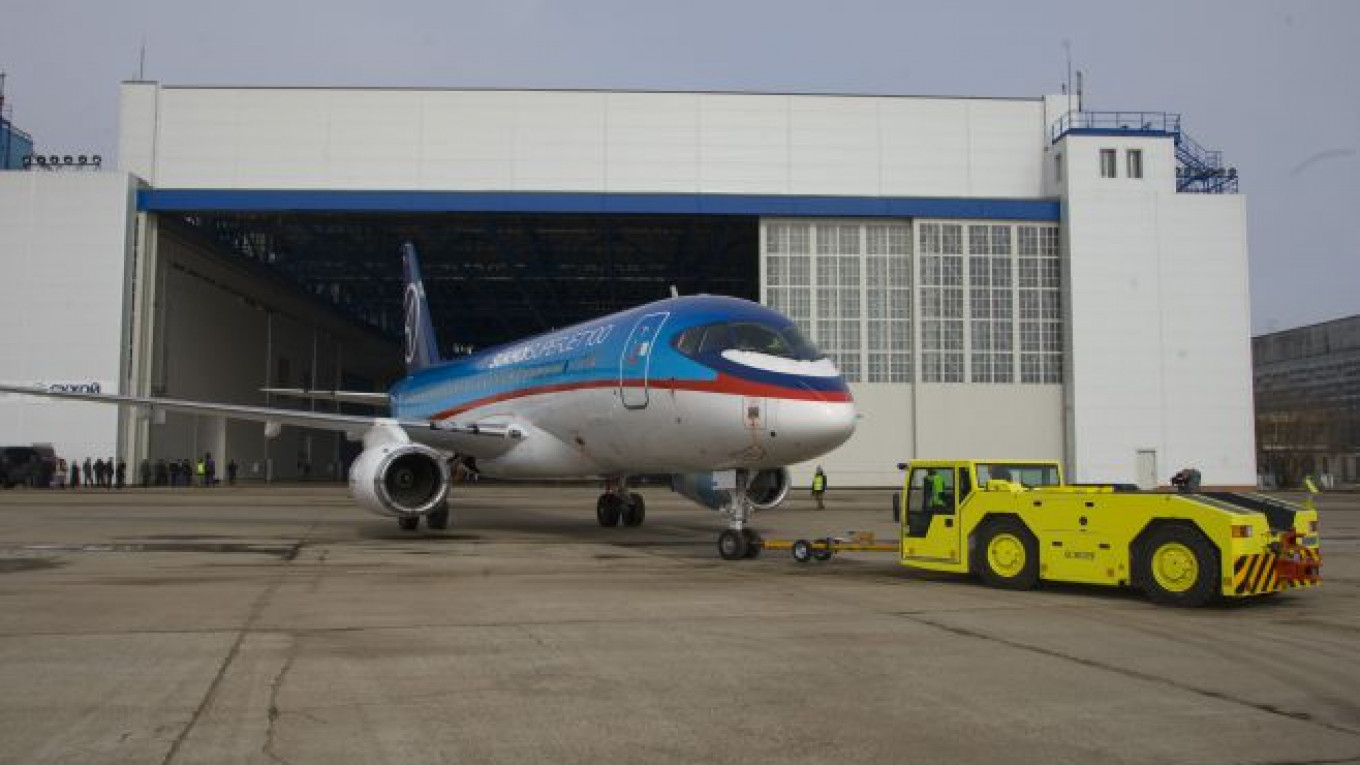Correction appended.
Ramenskoye airfield in Moscow's southeast suburbs, currently a cluster of hangars that serves as a launch pad for prototype military aircraft and home to one of world's largest air shows, is set to be transformed within two years into Moscow's fourth international passenger airport.
At a time when mutual sanctions are making Western companies jittery of investing in Russia, Lithuanian Avia Solutions Group last week announced a joint venture with Russia's state-owned technology conglomerate Rostec. At an on-site news conference, the two companies said they would modernize Ramenskoye airfield, turning it by 2020 into a full-scale airport called Ramport serving 12 million passengers each year.
Dmitry Shugaev, Rostec's deputy general director, was bullish on the project: "In the near future, the Moscow aviation hub will have a capacity gap of 63 million passengers per year," he said. "Ramport is just a start to take care of all that passenger flow."
Moscow's three major airports — Sheremetyevo, Domodedovo and Vnukovo — can currently handle up to 119 million passengers per year. Almost 180 million passengers are expected to use the hub by 2030.
But given the current state of economy, which is struggling under the hammer blows of Western sanctions and structural problems to fend of a recession, there are doubts that these passenger numbers will materialize.
"Analysts expect at least a prolonged slowdown. Some give even grimmer forecasts," said Oleg Panteleyev, head of aviation information agency AviaPort. "In this situation none of Moscow's airports may have passengers to give away," he said.
If that fear proves overblown, another issue is the lack of infrastructure. The future Ramport is nothing but a vast landing strip with no good road or rail connections.
Built From Scratch
Situated 25 kilometers southeast of Moscow near Zhukovsky, the famed home of Russian aviators and cosmonauts, Ramenskoye airport is a 5.4 kilometer experimental landing strip, long and wide enough to land any existing type of aircraft, military or civil. Indeed, it was designed to bear the burden of the Buran space shuttle in 1980s.
But apart from the strip, some old hangars and the battered buildings of an adjoining aviation research institute are the only other infrastructure in the territory of this would-be international airport.
The first passenger terminal in Ramenskoye is set for completion in 2016, and a second, bigger one, the following year. By the end of 2017 the airport plans to handle up to 8 million passengers per year. Further expansion will boost that number to 12 million by 2020.
Apart from the passenger terminals, the airport will have a cargo terminal, airplane servicing facilities, hotels and multi-story parking lots.
The project will require 10 billion rubles ($277 million) of investment. Rossia, the transportation and exhibition subsidiary of Rostec, will contribute land and buildings to the project. Its Lithuanian partner will invest 1 billion rubles ($27 million) of its own money and 8.3 billion rubles ($230 million) of borrowed funds.
As the passenger turnover balloons, jammed roads and absence of a direct train service to the airport will present other difficulties, aviation experts said.
Transportation Breakdown
The road route to Ramenskoye is via the Novoryazanskoye Shosse, which passes through crowded Moscow neighborhoods and is frequently clogged. It took The Moscow Times nearly 3 hours to get there by car from the center of Moscow.
Unlike the city's other airports, there is no direct Aeroexpress train to the future Ramport, though the authorities said one was under consideration. The nearest existing rail station — 40 to 50 minutes travel from Moscow proper — leaves you 15 minutes drive from the airfield.
Bus shuttles between the train station and airport would suffice to service passenger flows of 2 million people per year, Panteleyev said. "But as the passenger flows increase up to 6 to 8 million per year, the need for brand new track to the airport will become dire," he added. ?
Such infrastructure updates are outside Ramport's jurisdiction. Cash-strapped state rail company Russian Railways would have to fork out funds to build new railroad, while the bill for any expansion to the road network would go to the federal budget.
Fyodor Borisov, an aviation expert at Higher School of Economics' Institute of Transport and Transportation Policy, saw another problem — flight regulation.
"It would take considerable effort to settle regulation to allow civilian airlines to take off and land together with experimental militarily aircraft, as the priority is usually given to the latter," Borisov said.
However, experts said these problems are not insurmountable if Moscow's need for airport capacity is urgent. Especially given that the other options on the table are both more problematic and located hundreds of kilometers from the Kremlin.?
Correction: Due to an editing error, an earlier version of this article said Ramenskoye Airfield was located in Moscow's southwest suburbs. The airfield is in fact located south east of the city.
Contact the author at a.panin@imedia.ru
A Message from The Moscow Times:
Dear readers,
We are facing unprecedented challenges. Russia's Prosecutor General's Office has designated The Moscow Times as an "undesirable" organization, criminalizing our work and putting our staff at risk of prosecution. This follows our earlier unjust labeling as a "foreign agent."
These actions are direct attempts to silence independent journalism in Russia. The authorities claim our work "discredits the decisions of the Russian leadership." We see things differently: we strive to provide accurate, unbiased reporting on Russia.
We, the journalists of The Moscow Times, refuse to be silenced. But to continue our work, we need your help.
Your support, no matter how small, makes a world of difference. If you can, please support us monthly starting from just $2. It's quick to set up, and every contribution makes a significant impact.
By supporting The Moscow Times, you're defending open, independent journalism in the face of repression. Thank you for standing with us.
Remind me later.


